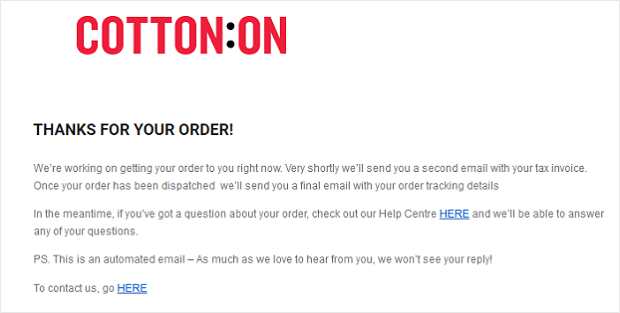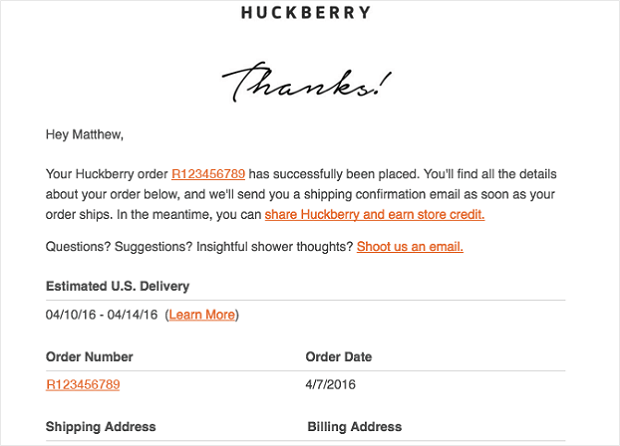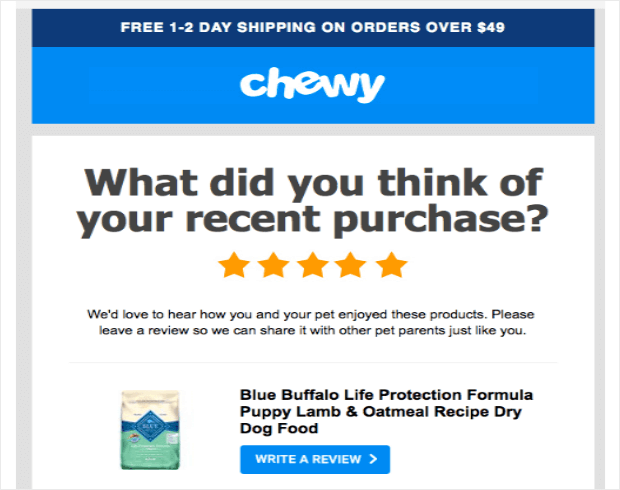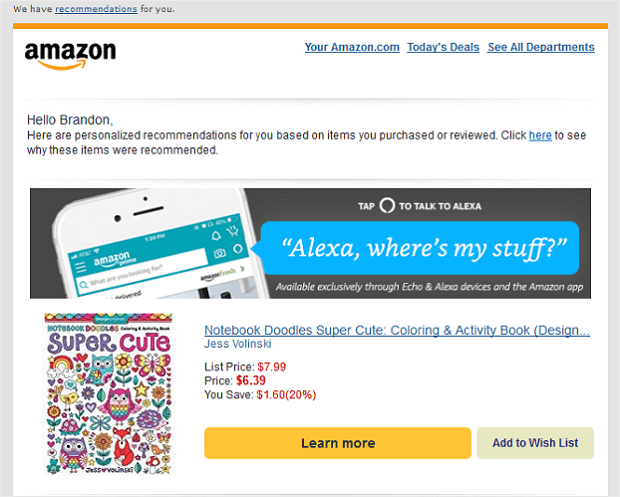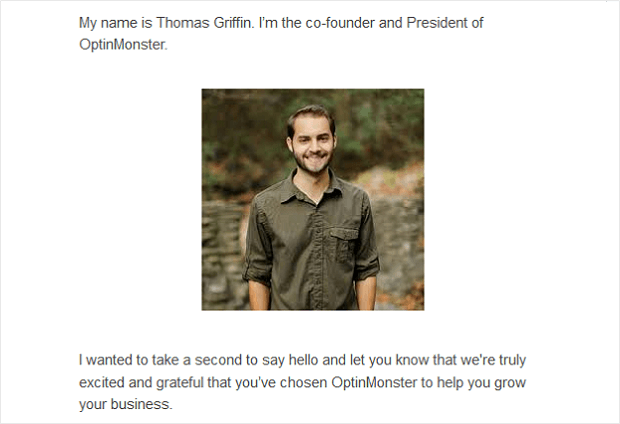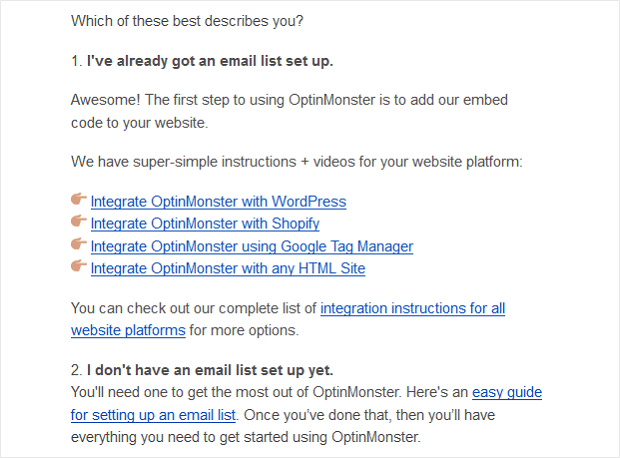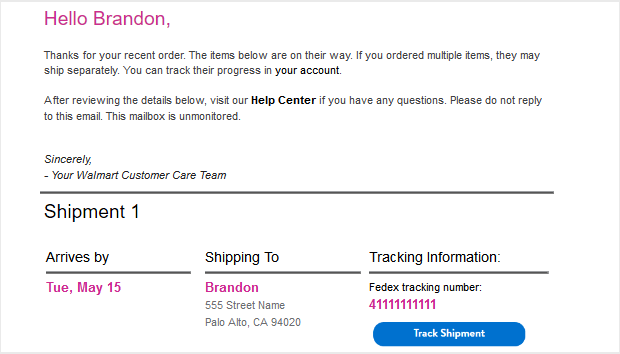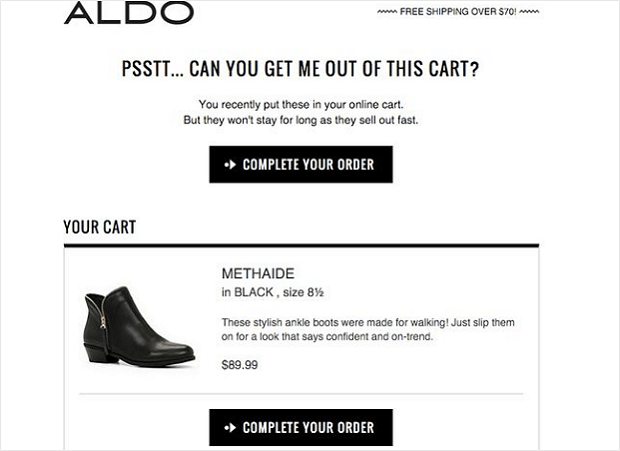Do you want to learn how to write the perfect sales follow up email?
In the world of sales, the follow up sales email stands as a beacon of persistence and professionalism. It’s the gentle nudge that reminds your prospects you’re there, ready to offer value.
Yet, crafting that perfect follow-up can sometimes feel like searching for a needle in a haystack. How do you strike the right balance between persistence and patience, making sure your message resonates rather than repels?
In this blog, you’ll discover everything you need to know about crafting an effective sales follow up email.
From key features and ready-to-use templates to compelling examples and attention-grabbing subject lines, we’ll cover all the bases to help you transform those no-responses into promising opportunities.
Let’s begin!
- What Is Sales Follow Up Email?
- Key Features of Sales Follow Up Email
- How To Write a Follow Up Sales Email
- Sales Follow Up Email Templates
- Sales Follow Up Email Subject Lines
- Sales Follow up Email Example
What Is Sales Follow Up Email?
A sales follow up email is a message salespeople or business sends to a potential customer after an initial email, phone call, or meeting.
Its primary purpose is to re-engage the prospect, provide additional information, address any questions or concerns, and move the sales process forward to close deals.
These emails play a crucial role in maintaining communication with prospects, nurturing cold email leads, and ultimately converting them into customers.
Key Features of Sales Follow Up Email
Here are some key aspects of a sales follow up email:
- Timing: The timing of a follow-up email is critical. It should be sent promptly after the initial contact or meeting, often within 24 to 48 hours, to ensure the conversation remains fresh in the prospect’s mind.
- Personalization: Effective follow up sales emails are personalized to the recipient. They reference specific details from the initial interaction, such as the prospect’s needs, pain points, or interests, to demonstrate attentiveness and build a connection.
- Value Proposition: The email should clearly articulate the value proposition, highlighting how the product or service can address the prospect’s specific needs or solve their problems.
- Call to Action (CTA): A strong CTA is essential. It guides the prospect on what to do next, whether it’s scheduling another meeting, signing up for a demo, or simply replying to the email with further questions.
- Follow-Up Sequence: Often, a single follow-up email is not enough. Sales team may use a follow-up email sequene and send a series of emails, spaced out over days or weeks, to stay in touch with the prospect without being intrusive.
- Professionalism and Courtesy: The tone of the email should be professional yet friendly. It’s important to respect the prospect’s time and decision-making process, offering assistance and information without pressure.
How To Write a Follow Up Sales Email
A compelling follow-up email has three key ingredients: personalization, value proposition, and a clear call to action.
Personalizing the email shows you remember and value the interaction. Mentioning a detail from your conversation can reignite their interest.
The value proposition is where many fall short. Each follow-up should offer something new: a piece of relevant content, a special offer, or an invitation to an exclusive event. It’s not just about what you want (their business) but what they gain by giving it to you.
Your call to action (CTA) should be clear and simple. Whether it’s scheduling another call or asking for feedback on a proposal, make sure they know exactly what the next step is.
Sales Follow Up Email Templates
Below are several templates tailored for different stages in the sales process. Remember, personalization is key, so adapt these templates to fit your specific situation and the unique needs of each prospect.
1. After an Initial Meeting or Call
Subject: Great to Connect Today, [Prospect’s Name]!
Email Body:
Hi [Prospect’s Name],
Thank you for taking the time to chat today. I enjoyed learning about [mention something specific about their needs or company] and discussing how [Your Company/Product] can help address [specific need].
As promised, I’ve attached more information about [specific feature or service] that we talked about. I believe this could be the solution to [specific problem or challenge] we discussed.
What does your schedule look like next week to continue our conversation? I’m keen to dive deeper into how we can specifically help [Prospect’s Company] overcome [specific challenge] and reach [specific goal].
Looking forward to your thoughts!
Best regards,
[Your Name] [Company Name]2. After Sending a Proposal
Subject: Next Steps on Your [Product/Service] Proposal
Email Body:
Hi [Prospect’s Name],
I hope this message finds you well. I wanted to follow up on the proposal I sent over for [Product/Service]. Have you had a chance to review it?
I’m eager to hear your feedback and answer any questions you might have. Your insights would be incredibly valuable to ensure that what we’re proposing meets [Prospect’s Company]’s needs and expectations fully.
Could we schedule a brief call to discuss your thoughts and any adjustments you might need? I’m available [provide two or three time slots], but I’m happy to work around your schedule.
Thank you once again for considering [Your Company] for your [specific need]. I’m looking forward to helping you achieve [specific goal].
Best,
[Your Name] [Company Name]3. Re-Engaging a Cold Lead
Subject: New Insights on [Topic/Industry] for [Prospect’s Company]
Email Body:
Hi [Prospect’s Name],
I hope you’re doing well. I was thinking about our last conversation regarding [specific topic or need] and how [Your Company/Product] can support [Prospect’s Company] in achieving its goals.
Since we last spoke, we’ve made some exciting updates to [Product/Service] that I believe could significantly impact your [specific area of interest or operation]. [Briefly mention what’s new or improved and how it benefits them].
I’d love to catch up and share these updates with you. Are you available for a quick call next week? I think you’ll find the new features quite beneficial, especially considering [specific challenge or goal] you mentioned before.
Looking forward to reconnecting and hearing your thoughts.
Warm regards,
[Your Name] [Company Name]4. After a Demo or Presentation
Subject: Reflecting on Our [Product/Service] Demo
Email Body:
Hi [Prospect’s Name],
Thank you for taking the time to explore [Product/Service] with me yesterday. I hope the demo gave you a good insight into how we can help [Prospect’s Company] with [specific problem or need].
Do you have any questions or need further information on anything we discussed? I’m here to help make your decision as easy as possible.
Also, I’d love to know your thoughts on how [Product/Service] fits with your current needs and goals. Your feedback is invaluable as we aim to ensure a perfect match for your requirements.
Can we schedule a follow-up call to discuss any thoughts or questions you might have? I’m available [provide two or three time slots], but let me know what works best for you.
Looking forward to your feedback and hopefully moving to the next steps together.
Best wishes,
[Your Name] [Company Name]5. Gentle Reminder Follow-Up
Subject: Just Checking In – Any Thoughts on [Proposal/Product/Service]?
Email Body:
Hi [Prospect’s Name],
I hope all is well. I wanted to gently check in as I haven’t heard back from you regarding [proposal, product, service] we discussed. I understand you’re busy, and priorities can shift quickly.
If you’ve had a chance to consider our [proposal/product/service] and have any questions or need further clarification, I’m here to help. Your feedback is crucial for us to ensure we meet your expectations and needs.
Please let me know if there’s a convenient time for you to discuss this further or if there are any updates on your end.
Thank you for your time, and I look forward to hearing from you soon.
Best regards,
[Your Name] [Company Name]6. After Sale Trigger Events
Subject: Thanks for Your Interest in [Event/Product/Service]!
Email Body:
Hi [Prospect’s Name],
I noticed you recently [describe the action they took, e.g., downloaded our whitepaper on X, signed up for our webinar on Y, visited our product page for Z]. I hope you found it valuable and insightful.
Given your interest in [specific topic or product], I thought it might be helpful to offer some additional resources and information that could further assist you in [specific goal or problem they are trying to solve].
[Optionally, provide a brief overview of a related product, service, or upcoming event that might interest them. Highlight how it addresses their needs or interests.]
I’d love to hear your thoughts on [the content they engaged with] and discuss how [Your Company] can help [Prospect’s Company] achieve its goals with [your product/service]. Are there any particular challenges you’re facing in [relevant area] that we can help with?
Would you be open to a quick call or meeting to discuss this further? I’m available [provide two or three time slots], but I’m happy to work around your schedule. Let me know what works best for you.
Thank you for your interest in [Your Company/Product/Service], and I look forward to the opportunity to speak with you soon.
Best regards.
Sales Follow Up Email Subject Lines
Here are several effective sales follow up email subject lines designed to increase open rate and response rates from your prospects:
1. “Quick Question for You, [Prospect’s Name]”
Personal and direct, indicating a brief, easy-to-answer query.
2. “Touching Base After Our Chat on [Date/Event]”
Reminds the recipient of your previous interaction, adding context.
3. “Missed You! A Recap of [Event/Meeting] Insights”
Offers value by summarizing key points the prospect missed.
4. “[Prospect’s Name], Let’s Pick Up Where We Left Off?”
Invites the prospect to continue a previous conversation.
5. “Can We Help? Noticed You Looked at [Product/Service]”
Indicates personalized attention to the prospect’s interests.
6. “Thoughts on Our Proposal? Your Feedback Matters”
Encourages engagement by valuing the prospect’s opinion.
7. “New Ideas for [Prospect’s Company] Goals”
Suggests fresh, relevant content tailored to their objectives.
8. “Your Next Steps Towards [Achieving Specific Goal]”
Guides the prospect on how to proceed with actionable advice.
9. “Did You Get What You Needed, [Prospect’s Name]?”
Shows concern for the prospect’s needs and queries.
10. “Unlocking More Value for [Prospect’s Company]”
Promises additional benefits or insights.
11. “Following Up: [Specific Question] About [Topic]”
Indicates a specific, targeted follow-up question.
12. “Eager for Your Thoughts on Our Last Discussion”
Expresses genuine interest in the prospect’s opinions.
13. “[Prospect’s Name], Avoid Missing Out on [Offer/Opportunity]”
Creates a sense of urgency and potential loss.
14. “How [Prospect’s Company] Can Overcome [Specific Challenge]”
Offers solutions to a problem discussed previously.
15. “Is [Problem] Still a Priority for [Prospect’s Company]?”
Re-engages the prospect on a previously discussed issue.
16. “A Quick Update for You, [Prospect’s Name]”
Promises new, relevant information in a concise manner.
17. “Ready to Move Forward? Next Steps Inside”
Encourages action with the promise of clear guidance.
18. “[Prospect’s Name], Let’s Address Your [Specific Concern]”
Shows readiness to tackle issues important to the prospect.
19. “Thanks for [Action], [Prospect’s Name]! What’s Next?”
Acknowledges a recent interaction and prompts for progression.
20. “Making [Solution/Benefit] a Reality for [Prospect’s Company]”
Focuses on turning discussions into tangible outcomes.
Sales Follow-up Email Example
Generally speaking, the purpose of a sales follow up email is to touch base with your customers after the previous email or interactions.
Like we mentioned earlier, they keep the channel of communication open after the sale is over. This means that customers stay engaged with your brand. They start thinking more about your business when they need to buy things. As a result, they’re more likely to return to your shop and buy more.
According to Klaviyo, the 3 main post-purchase emails are:
- The “Thank You” letter.
- Request for feedback.
- Product recommendations.
Of course, these aren’t the only post-purchase email examples. There are a few others, which we’ll also explore in this article. But the 3 mentioned above are probably the most common, so we’re starting our list with them.
Let’s dive right in.
1. The “Thank You” Email
The “Thank You” sales follow up email is usually sent as a courtesy. It’s a way to acknowledge customers and let them know you appreciate their business. You can also use this moment to address any issues or concerns customers may have.
Check out this automated “Thank You” email from clothing retailer, Cotton:On.
As you can see, it’s pretty basic. It acknowledges the customer’s order and tells them how they can track their delivery. The email also includes a link to the company’s customer service department. That way, shoppers have a way to contact customer service directly if they have any questions or issues.
Of course, there are a few ways you could improve Cotton:On’s “Thank You” email to boost performance even more.
For example, you could connect with the customer by using a personalized message, like this “Thank You” email posted by Klaviyo.
Or this personalized Huckberry email hosted by Really Good Emails which includes shipping details.
And the Huckberry email even has product recommendations at the bottom of the message!
As you can see, the “Thank You” sales follow-up email is a powerful tool. With a little personalization and some product recommendations, you can use it to strengthen relationships and further sales.
2. The Product Review Email
Second on our sales follow up email list is the product review email. These are a great way to assess the performance of your brand. You can use them to review actual products as the name suggests. Or, you can collect even more information about your eCommerce store.
This sample email hosted by Really Good Emails gets right to the point. The benefit of this is that the reader immediately knows what this email is for and what they’re supposed to do.
While the method in the picture above certainly works, it doesn’t hurt to sharpen your sales follow-up techniques. If the reader is going to review your product, might as well use this time to broaden your survey data. The customer’s already engaged, after all. Take this opportunity to collect feedback on your:
- Website layout.
- Customer service.
- Products offered.
And any other information you can use to improve customer experience (CX). That way, you can gain deeper insight into what you’re doing well and what you need to rework.
3. The Recommendations Email
Product recommendations are a great way to increase revenue through upselling and cross-selling. And if there’s anybody that’s mastered the art of boosting revenue with sales follow-up techniques, it’s Amazon. Check out this recommendation based on previous purchases.
To get the most out of this email, don’t combine it with your order confirmation email. Instead, send the customer this email separately.
Ideally, the recommendations should be things that go well with the products they’ve just purchased. For example, if someone ordered a laptop from your eCommerce store, recommend products that will enhance it. Items like carrying cases, screen protectors, and longer cords.
You may want to give them the opportunity to add recommended products to their cart before it ships. Just make sure to give them a time frame for purchasing new items, so that everything ships at once.
4. The Welcome Aboard Email
Think of the welcome email as a close cousin to the “Thank You” email. Usually, this is the type of email you’ll send if you’re selling a subscription-based service. You use this email to welcome the customer into your business community while thanking them for making their purchase.
The reason why this type of sales follow-up email works better for subscription services is that most subscriptions are a once-off transaction. Or they’re a transaction that takes place annually. Or bi-annually. Either way, our point is that subscriptions don’t have as many repeat transactions. And that means fewer email opportunities.
Plus, the welcome email is a great opportunity to build relationships with your customers. And if your business makes its money through subscribers, relationship building is really important. ?
Here’s an example of the welcome email you’ll receive upon subscribing to OptinMonster—which you totally should. But more on that later.
As you can see, it’s got a nice and friendly tone that welcomes the customer into the community. But wait, there’s more.
The email also gives new customers instructions on how to use OptinMonster. That way, they don’t have to spend their time reading through tutorials. All the information is right there, in front of them.
5. The Shipping Notification Email
This one isn’t really a recommendation, it’s something you must send to your customers. Customers expect to know when their items shipped and how to track them. That’s right, they expect to know – not want.
Here’s a standard post-sale email from Walmart. It includes the customer’s address, the tracking number, and the items they purchased (not pictured). That way, the customer can double check whether all their information is correct. If there’s an error, they can contact customer service and get it resolved ASAP.
If you aren’t sending shipping notification emails, stop what you’re doing right now. There are a number of plugins you can download for your eCommerce site that’ll do the work for you.
Check out ShipStation Integration if you’re using WooCommerce. It’s your one-stop solution for shipping labels and customizable notification emails.
If you’re running a Shopify site, you can achieve the same effect with Shopify Shipping.
6. Informative Emails
Customer expectations are changing.
These days, brands are expected to do more than simply sell products. They need to engage with their customers in a way that creates value. In other words, shoppers want to be wowed – at least a little bit.
Informative emails are some of the best sales follow up email techniques in your toolbox. They build relationships with your customers and offer valuable information.
But how does this look?
Take a glimpse at this email from Harry’s Magazine.
See anything different about it?
For starters, it’s not trying to pitch anything to the reader. Instead, it’s giving them information on how they can improve their shaving technique. And customers love this. They want to learn new information. And they usually want that information for free, which is why lead magnets perform so well.
So, be sure to engage them with informative emails from time to time. Do this by sending relevant blog posts, tutorials, or you can write fresh and exclusive email content. It’s your choice.
7. The Cart Abandonment Email
Okay, okay. Cart abandonment emails aren’t technically part of the sales follow-up process.
They can be. Customers abandon carts, too. But generally speaking, you won’t be sending many cart abandonment emails right after making a sale.
Why are we including cart abandonment in our sales follow up emails list? Because recovering abandoned carts is important. Really, really important. If you don’t address them, you won’t have any post-sale emails to send out.
Case Study: See How Scott Wyden Imagery Recovered 21% of Abandoned Carts and Grew His List 3x!
So, make sure you follow up with your potential customers. Drop them an email reminding them to complete their purchase.
Or even better, take it a step further and engage them on your site. OptinMonster’s Exit-Intent® feature lets you target visitors with an optin the moment they decide to bounce from your webpage.
That way, you’ve got a better chance of completing your sale. And once your transaction is final, hit them up with a sales follow-up email like the ones in this post.
Let’s Recap: Why You Need Sales Follow Up Email
We hope this article helped you understand the importance of a sales follow-up email because you should always send a follow-up email after a sale or outreach.
- They improve the customer experience.
- It gives the customer a platform for solving customer service problems.
- Sales follow-up emails help customers establish relationships with your brand.
It’s not hard to see the benefits of the sales follow-up. But you’ll never need to send one unless you learn how to maximize your conversion rates. That’s where OptinMonster comes in.
That’s because OptinMonster makes it easy to capture emails using smart, custom-tailored optins. Features like geo-targeting, page-level targeting, and delay triggers make it easy to determine who sees your optins and when.
OptinMonster puts you in control of your lead generation campaign. You can choose from any ready-made templates or build one that works best with your brand. Creating custom-tailored optins has never been easier.
Give OptinMonster a try today and see firsthand why it should be a part of everyone’s sales-boosting initiative.
Also check out:
- 11 Best Marketing Automation Software for Small Businesses
- 31 Call to Action Examples + How To Write an Effective CTA
- 13 Best CRM for Small Business – Expert Review
- Email Marketing: The #1 Ridiculously Easy Way To Grow Your Business
- Social Proof for Marketing: Definition, Benefits, & Examples
- 18 Proven Ways to Increase Your Conversion Rate Throughout Your Sales Funnel
Disclosure: Our content is reader-supported. This means if you click on some of our links, then we may earn a commission. We only recommend products that we believe will add value to our readers.



